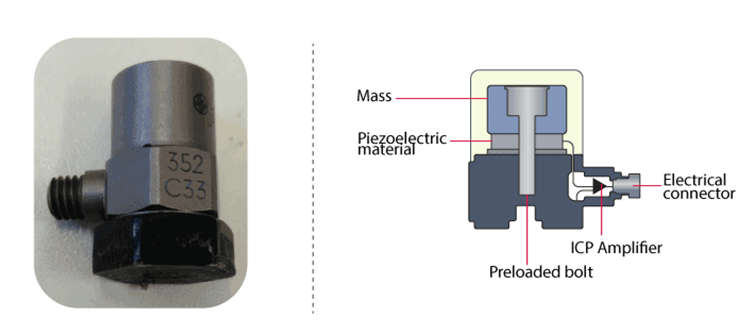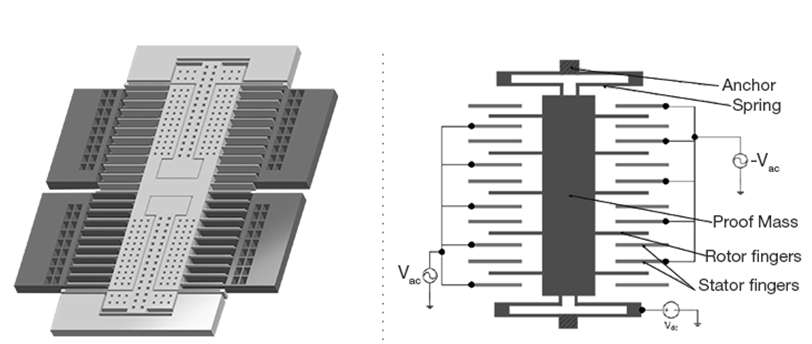What is Accelerometer Sensor?
- An electromechanical instrument called an accelerometer is used to gauge acceleration forces. These forces can be either static, like the force of gravity, or dynamic, such as in the case of mobile gadgets.
- Acceleration is the measure of how quickly a body’s velocity changes over time. According to relative theory, there are two different forms of acceleration depending on the relative object used to measure the speed.
- Inertia, or the observer at rest about the item being measured, is the appropriate acceleration, which is the physical acceleration of the body.
- The coordinate acceleration is determined by the choice of observers and coordinate system. This is insufficient acceleration. The electromechanical tool used to gauge an object’s appropriate acceleration is an accelerometer sensor.
Working of Accelerometer Sensor
- A huge electronic device’s simple circuit serves as the accelerometer. Despite its unassuming exterior, the accelerometer is composed of various components and functions in a variety of ways, including the piezoelectric accelerometer and the capacitance accelerometer.
Piezoelectric Accelerometer
- The piezoelectric effect is the most popular form and uses microscopic crystal structures that get stressed due to accelerative forces. A voltage arises in the crystals from the stress, and the accelerometer translates this voltage to velocity and orientation.
- The mechanical motion produced by an accelerometer is often converted into an electrical signal using piezoresistive and capacitive components. Single crystals make up piezoelectric accelerometers. These gauge acceleration via the piezoelectric action. These crystals produce a voltage when under stress, which can be used to calculate the velocity and orientation.

Capacitance Accelerometer
- Changes in capacitance between microstructures are detected by the capacitance accelerometer. The capacitance changes when one of these microstructures is moved by the accelerative force, and the accelerometer interprets this voltage change.
- Two axes in an accelerometer are used to measure motion in two dimensions, with a third axis being an option for 3D placement. To identify the moment of impact, smartphones utilize a three-axis model while autos use a two-axis one.

- A silicon micro-machined element is used in capacitive accelerometers. Here, acceleration is sensed to generate capacitance, which is then converted into a voltage to measure the velocity values.
- Modern accelerometers, which consist of a cantilever beam with proof mass, are the smallest MEMS. Two-dimensional and three-dimensional versions of accelerometers are available to assess both direction and velocity.
Applications of Accelerometer Sensor
- For inertial navigation systems, highly sensitive accelerometers are used.
- To detect and monitor vibrations in rotating machinery.
- To display images in an upright position on screens of digital cameras.
- For flight stabilization in drones.
- Accelerometers are used to sense orientation, coordinate acceleration, vibration, and shock.
- Used to detect the position of the device in laptops and mobiles.
- High-frequency recording of biaxial and triaxial acceleration in biological applications for discrimination of behavioral patterns of animals.
- Machinery health monitoring.
- To detect faults in rotator machines.
- These are also used for building and structural monitoring to measure the motion and vibration of the structure when exposed to dynamic loads.
- To measure the depth of CPR chest compressions.
- Navigation systems make use of accelerometer sensors for knowing the direction.
- Remote sensing devices also use accelerometers to monitor active volcanoes.
